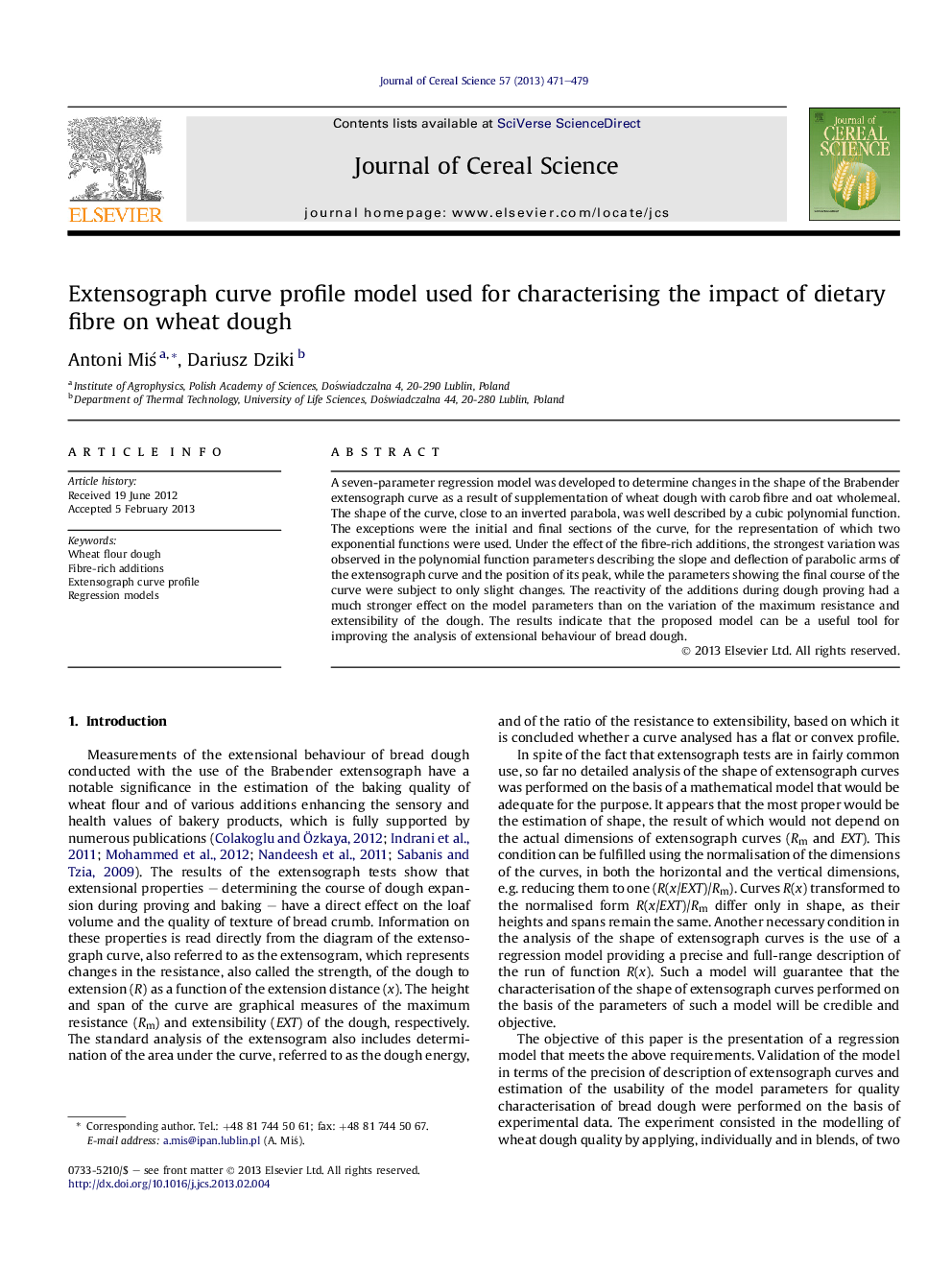| Article ID | Journal | Published Year | Pages | File Type |
|---|---|---|---|---|
| 6377939 | Journal of Cereal Science | 2013 | 9 Pages |
A seven-parameter regression model was developed to determine changes in the shape of the Brabender extensograph curve as a result of supplementation of wheat dough with carob fibre and oat wholemeal. The shape of the curve, close to an inverted parabola, was well described by a cubic polynomial function. The exceptions were the initial and final sections of the curve, for the representation of which two exponential functions were used. Under the effect of the fibre-rich additions, the strongest variation was observed in the polynomial function parameters describing the slope and deflection of parabolic arms of the extensograph curve and the position of its peak, while the parameters showing the final course of the curve were subject to only slight changes. The reactivity of the additions during dough proving had a much stronger effect on the model parameters than on the variation of the maximum resistance and extensibility of the dough. The results indicate that the proposed model can be a useful tool for improving the analysis of extensional behaviour of bread dough.
⺠Developed model describes the Brabender extensograph curve shape. ⺠The model allows to detect differences in quality of fibre-supplemented dough. ⺠Dough proving time effects stronger model parameters than resistance and extensibility.
